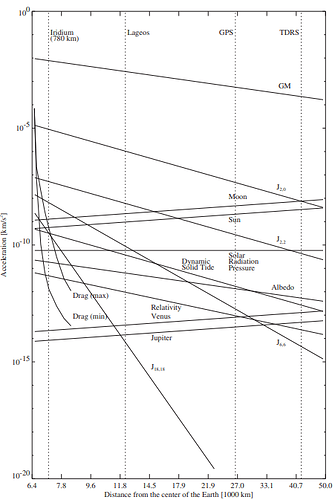Hi @luca123,
The figure just below is one of my favourite in orbital mechanics [1]. It shows the order of magnitude of various perturbations depending the satellite altitude. It helps a lot to build the best dynamical model to perform orbit propagation. Orekit can model all these perturbations.
[1]: Montenbruck, O., Gill, E., & Lutze, F. (2002). Satellite orbits: models, methods, and applications. Appl. Mech. Rev., 55(2), B27-B28.
To help you initializing the solid and ocean tides, you can look at the method setSolidTides and setOceanTides of the GNSSOrbitDetermination.java tutorial.
Best regards,
Bryan
